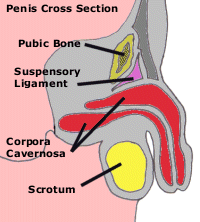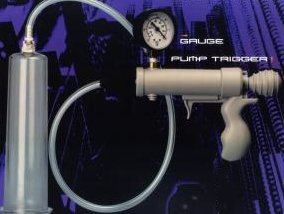Key Impotence Facts
- Impotence is the repeated inability to get or keep an erection firm enough for sexual intercourse.
- Impotence affects up to 30 million men in the U.S.
- Impotence usually has a physical cause.
- Impotence is treatable at all ages.
- Treatments may include therapy, drug therapy, vacuum devices and surgery.
Impotence (or erectile dysfunction, as it is also known) is the inability to achieve and maintain an erection that is firm enough for sexual intercourse to occur.
Impotence can be a total inability to achieve erection, an occasional ability to do so, or a tendency to sustain erections for only a brief period. These variations make defining impotence and estimating its incidence difficult. Medical surveys indicate that for every 1,000 men in the United States, 7.7 physician office visits were made for impotence in 1985. By 1999, that rate had nearly tripled to 22.3. The increase happened gradually, presumably as treatments such as vacuum devices and injectable drugs became more widely available and discussing erectile function became more accepted. Perhaps the most important advance was the introduction of the oral drug Viagra (sildenafil citrate) in 1998.
In older men, impotence usually has a physical cause, such as disease, injury, or the side effects of drugs. Any disorder that causes injury to the nerves or impairs blood flow in the penis has the potential to cause impotence. Incidence increases with age: About 5 percent of 40-year-olds and between 15 and 25 percent of 65-year-olds experience impotence. But impotence does not have to be an inevitable part of aging, it is treatable at any age and awareness of this fact has been growing.
 How An Erection Works
How An Erection Works
The penis contains two chambers called the corpora cavernosa, which run the length of the organ. A spongy tissue fills these chambers and they are surrounded by a membrane, called the tunica albuginea. The spongy tissue contains smooth muscles, fibrous tissues, spaces, veins, and arteries. The urethra, which is the channel for urine and ejaculate, runs along the underside of the corpora cavernosa.
Erection begins with sensory or mental stimulation, or both. Impulses from the brain and local nerves cause the muscles of the corpora cavernosa to relax, allowing blood to flow in and fill the spaces. The blood creates pressure in the corpora cavernosa, making the penis expand. The tunica albuginea helps trap the blood in the corpora cavernosa, thereby sustaining erection. When muscles in the penis contract to stop the inflow of blood and open outflow channels, erection is reversed.
What Causes Impotence
An erection requires a precise sequence of events to happen and impotence can occur when any of the events in this sequence is disrupted. The sequence includes nerve impulses in the brain, spinal column, and area around the penis, and response in muscles, fibrous tissues, veins, and arteries in and near the corpora cavernosa.
Damage to nerves, arteries, smooth muscles, and fibrous tissues, often as a result of disease, is the most common cause of impotence. Diseases such as diabetes, kidney disease, alcoholism, vascular disease, and neurologic disease account for about 70% of impotence cases. Around 50 percent of men with diabetes experience impotence.
Surgery - such as prostate surgery for cancer - can injure nerves and arteries near the penis, causing impotence. Injury to the penis, spinal cord, prostate, bladder, and pelvis can lead to impotence by harming nerves, smooth muscles, arteries, and fibrous tissues of the corpora cavernosa. In addition, many common medicines--blood pressure drugs, antihistamines, antidepressants, tranquilizers and appetite suppressants can produce impotence as a side effect.
Experts believe that psychological factors such as stress, anxiety, guilt, depression, low self-esteem, and fear of sexual failure cause up to 20% of impotence cases. Other possible causes are smoking, which affects blood flow in the veins and arteries and hormonal abnormalities, such as insufficient testosterone.
Recognizing Impotence
Patient histories can help define the degree and nature of impotence. A medical history can disclose diseases that might lead to impotence, while simple recollections of sexual activity might help distinguish between problems with sexual desire, erection or ejaculation. The use of certain prescription or illegal drugs can suggest a chemical cause, since drug effects account for 25% of impotence cases. Cutting back or substituting certain medications can often remove the problem.
Laboratory tests may also help diagnose impotence. Tests for systemic diseases include blood counts, urinalysis, lipid profile, and measurements of liver enzymes. Measuring the amount of testosterone in the blood can yield information about problems with the endocrine system and is indicated especially in patients with decreased sexual desire.
A physical examination may help identify systemic problems. If the penis is not sensitive to touching then a problem in the nervous system may be the cause, for example. Abnormal secondary sex characteristics, such as hair pattern, can indicate hormonal problems. Unusual characteristics of the penis itself could suggest the source of the problem - for example, an erect penis that bends or curves could be the result of Peyronie's disease.
Monitoring erections that occur during sleep (known as nocturnal tumescence) can help rule out certain psychological causes of impotence. Healthy men have involuntary erections during sleep. If nocturnal erections do not occur, then impotence is likely to have a physical rather than psychological cause. Tests of nocturnal erections are not completely reliable however as doctors have not standardized such tests.
A psychosocial examination - often involving a man's sexual partner- using an interview and a questionnaire, reveals any psychological factors that may be involved.
Treating Impotence
Most doctors recommend that treatments proceed from least invasive to most invasive. Cutting back on any drugs with harmful side effects is usually considered first. If you think a particular drug is causing problems with erection, tell your physician. Psychotherapy in selected patients is considered next, followed by oral or locally injected drugs, vacuum devices and surgically implanted devices. Surgery involving veins or arteries may be considered in rare circumstances.
Experts often treat psychologically based impotence using techniques that decrease the anxiety associated with intercourse. The patient's partner can help with the techniques, which include gradual development of intimacy and stimulation. Such techniques also can help relieve anxiety when impotence from physical causes is being treated.
 Drugs for treating impotence can be taken orally, injected directly into the penis, or inserted into the urethra at the tip of the penis. In 1998, the FDA approved Viagra, the first pill to treat impotence. Taken an hour before sexual activity, Viagra works by enhancing the effects of nitric oxide, a chemical that relaxes smooth muscles in the penis during sexual stimulation and allows increased blood flow.
Drugs for treating impotence can be taken orally, injected directly into the penis, or inserted into the urethra at the tip of the penis. In 1998, the FDA approved Viagra, the first pill to treat impotence. Taken an hour before sexual activity, Viagra works by enhancing the effects of nitric oxide, a chemical that relaxes smooth muscles in the penis during sexual stimulation and allows increased blood flow.
While Viagra improves the response to sexual stimulation, it does not trigger an automatic erection as injections do. Men who take nitrate-based drugs for heart problems should not use Viagra because the combination can cause a dangerous drop in blood pressure. Generic drugs containing sildenafil citrate - the active ingredient in Viagra - have recently become available presenting a less expensive option for treating impotence.
Oral testosterone can reduce impotence in some men with low levels of natural testosterone, but it is not always effective and can cause liver damage. Patients also have claimed that other oral drugs - including yohimbine hydrochloride, dopamine and trazodone - are effective, but the results of scientific studies to substantiate these claims have been inconsistent.
Many men achieve stronger erections by injecting drugs such as Caverject directly into the penis, causing it to become engorged with blood. These drugs work by widening the blood vessels but they can create unwanted side effects such as a persistent erection (known as priapism) and scarring.
A system for inserting a pellet of a drug called alprostadil into the urethra is marketed as Muse. The system uses an applicator to deliver a pellet of the drug an inch into the urethra. An erection begins within 10 minutes and lasts up to an hour. The most common side effects are aching in the penis, burning sensation in the urethra; redness from increased blood flow to the penis and urethral bleeding or spotting.
 Vacuum devices cause erection by creating a partial vacuum, which draws blood into the penis, engorging and expanding it. The devices have three components: a plastic cylinder, into which the penis is placed; a pump, which draws air out of the cylinder; and an elastic band, which is placed around the base of the penis to maintain the erection after the cylinder is removed and during intercourse by preventing blood from flowing back into the body.
Vacuum devices cause erection by creating a partial vacuum, which draws blood into the penis, engorging and expanding it. The devices have three components: a plastic cylinder, into which the penis is placed; a pump, which draws air out of the cylinder; and an elastic band, which is placed around the base of the penis to maintain the erection after the cylinder is removed and during intercourse by preventing blood from flowing back into the body.
Surgery for impotence usually has one of three goals:
- to implant a device that can cause the penis to become erect
- to reconstruct arteries to increase flow of blood to the penis
- to block off veins that allow blood to leak from the penile tissues
Implanted devices - or prostheses - can restore erection in many men with impotence. Possible problems with implants include mechanical breakdown and infection, although mechanical problems have diminished in recent years thanks to technological advances. Malleable implants usually consist of paired rods, which are inserted surgically into the corpora cavernosa. The user manually adjusts the position of the penis and, therefore, the rods. Adjustment does not affect the width or length of the penis. Inflatable implants consist of paired cylinders, which are surgically inserted inside the penis and can be expanded using pressurized fluid. Tubes connect the cylinders to a fluid reservoir and a pump, which are also surgically implanted. The patient inflates the cylinders by pressing on the small pump, located under the skin in the scrotum. Inflatable implants can expand the length and width of the penis somewhat. They also leave the penis in a more natural state when not inflated.
Surgery to repair arteries can reduce impotence caused by obstructions that block the flow of blood. The best candidates for such surgery are young men with discrete blockage of an artery because of an injury to the crotch or fracture of the pelvis. The procedure is less successful in older men with widespread blockage.
Surgery to veins that allow blood to leave the penis usually involves an opposite procedure - intentional blockage. Blocking off veins can reduce the leakage of blood that diminishes the rigidity of the penis during erection. However, experts have raised questions about the long-term effectiveness of this procedure, and it is rarely done.

